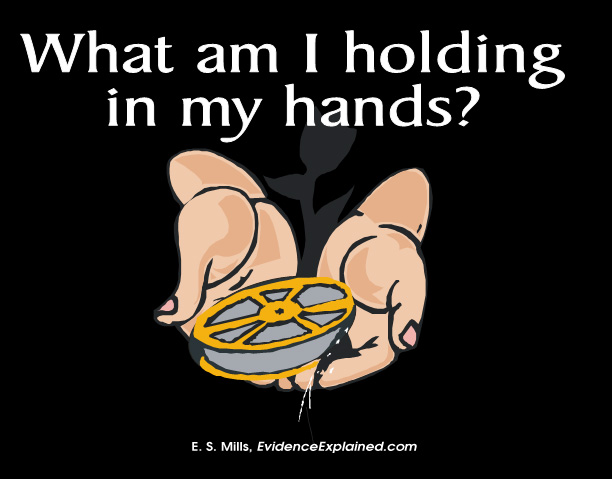18 February 2015
Two mantras are common among those who use historical material:
- Cite what you've actually used.
- To decide what it is you've actually used, ask yourself: What am I holding in my hand?

One aspect of that Handholding Principle is often overlooked. We also need to ask ourselves: Is this material published or unpublished?
If we use a published photograph, deed, letter, will, or pension application, the manner in which we cite it will be significantly different from the manner in which we would cite something unpublished, something that is accessible in just one place, something we eyeballed there and can't access again without going there.
- If we are using a traditionally published image of a document, we have not used the actual document from Whatever Archives. We will be holding a book, or a journal, or a magazine, or a roll of microfilm, or that strange critter seldom seen by modern researchers—that card of tiny little negatives called, what, fish? no, fiche!
- If we are using an image published online, what we would be holding—if we reduced it to a physical form—would be a sheet of paper with (a) an image of a document, or (b) a database entry, or (c) an article we obtained from Such-and-Such Website, which (we can hope) tells us the source of its information
All of which is to say:
Our citation needs to reflect that difference between a published image and the original, the difference between a database entry and an image, the difference between an abstract or transcript that conveys only the details in the document as opposed to an authored article or book that injects interpretations and options. Failing to record these differences will misrepresent what we have used. That misrepresentation could lead us or others astray in those many cases in which an alteration or legibility problem exists with the derivative we actually used.
And, of course, if you've never been sure how to tell whether something is published or unpublished, check out EE 2.18.
PHOTO CREDIT: Created by E. S. Mills in the pre-PowerPoint Dark Ages, for course instruction in her evidence-analysis classes at Samford University's IGHR.